TEDxStanford shines inspiring light on humanity
Thought-provoking talks and electric performances characterized the fifth annual TEDxStanford conference on April 24. Social activists, dancers, teachers, scientists, engineers and scholars illuminated what makes their humanity come alive.
From horse riding to social activism and the value of teachers, the fifth annual TEDxStanford conference on Sunday was a spirited journey through ideas and issues for any member of the human race.
The conference, titled “The Human Race,” took place at CEMEX Auditorium, featuring 22 Stanford-affiliated speakers and performers. The event spotlighted some of Stanford’s most accomplished pioneers in the arts, technology, medicine and social sciences. TED posts all its talks free online, and videos of Sunday’s performances on campus will be posted at tedx.stanford.edu.
Each segment spanned roughly 18 minutes, covering a wide range of subjects and issues. Reflective of Stanford culture, the program included analytical data, deep discussions and lively artistic performances.
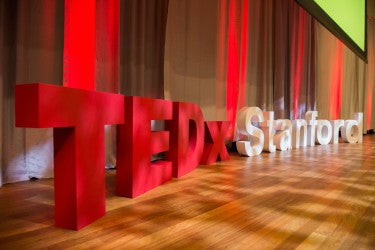
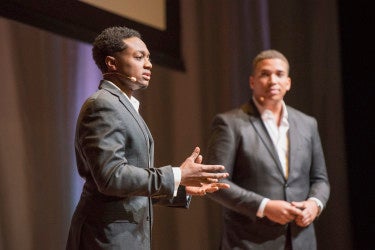
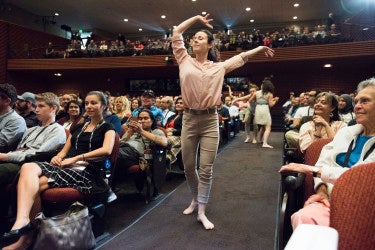
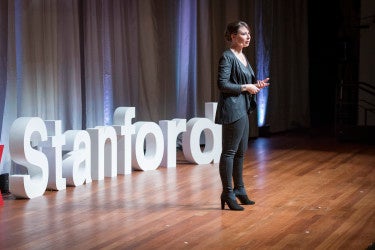
Image credit: L.A.Cicero
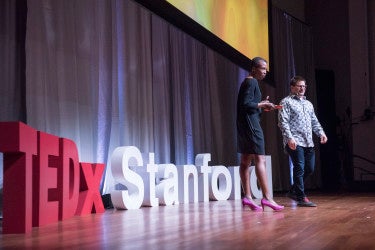
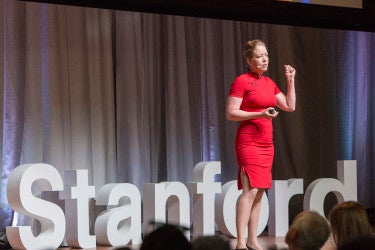
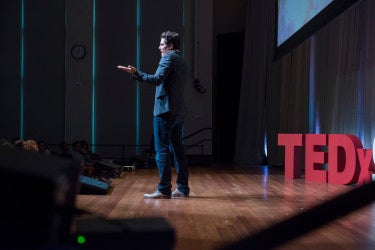
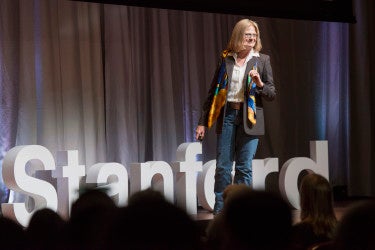
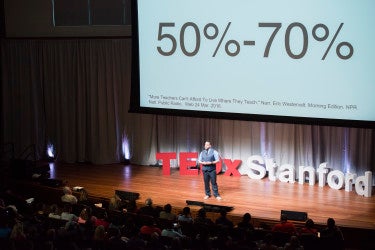
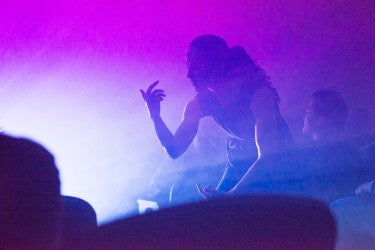
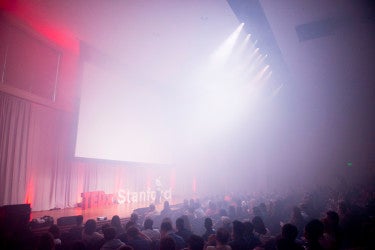
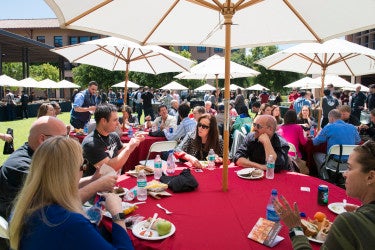
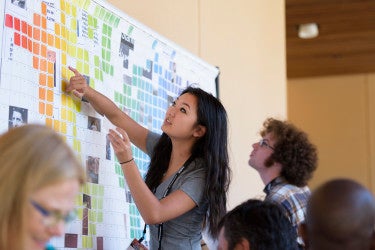
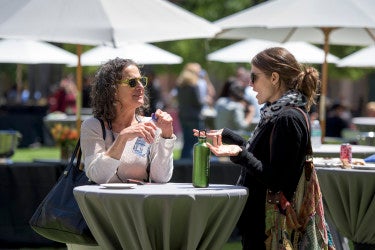
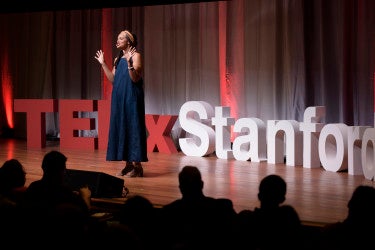
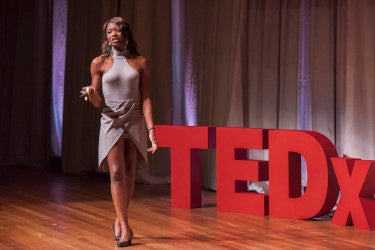
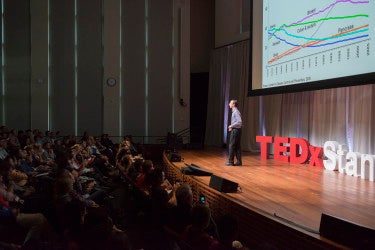
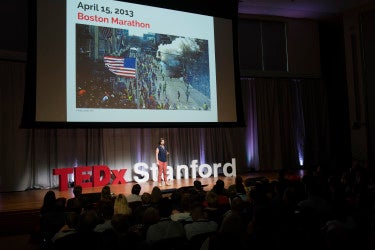
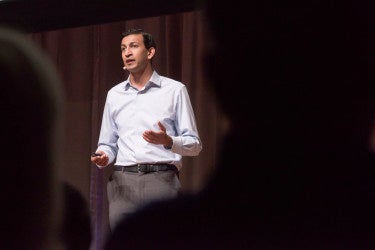
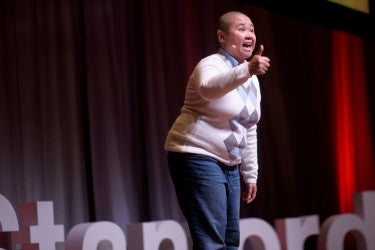
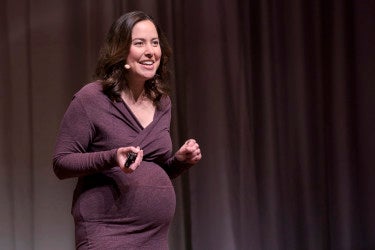
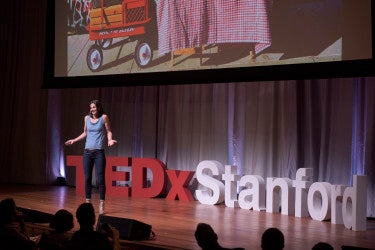
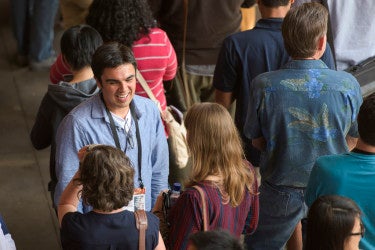
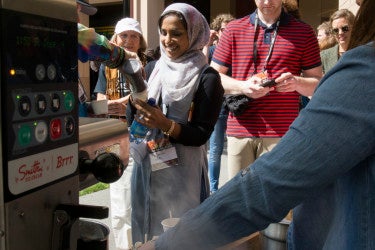
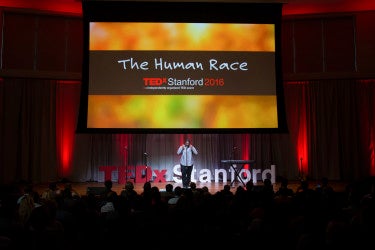
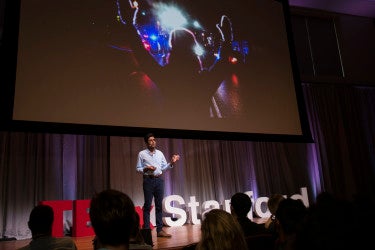
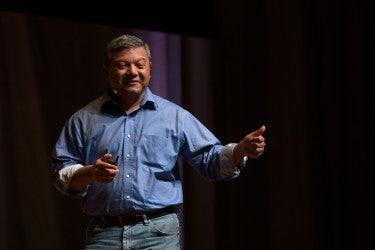
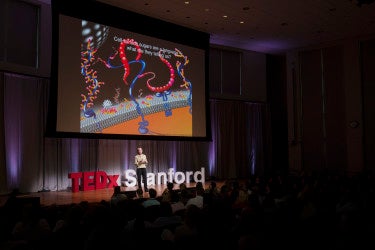
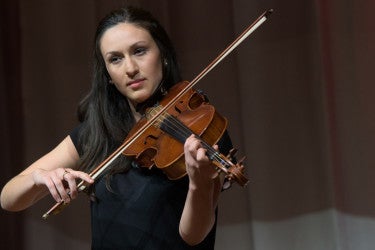
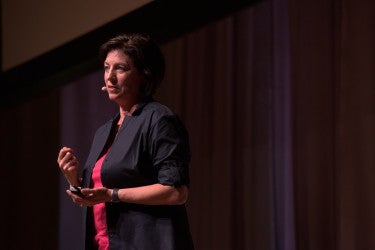
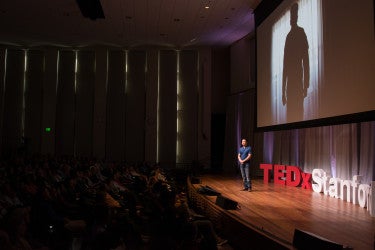
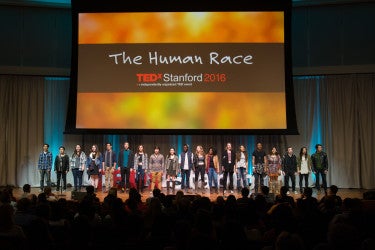
The festivities kicked off with members of the LEVYdance group dancing through the aisles as well as on stage. Afterwards, Garance Marneur, the group’s director, said they try to build deeper connections between the audience and the dancers with every performance.
“That’s when the magic happens,” said Marneur.
‘Learn from mistakes’
Margaret Neale, a professor of management at the Graduate School of Business, spoke about negotiations and lessons learned from her horse Sal, a sometimes stubborn mare.
Rider and horse, Neale explained, need to have the same goals, but that is not always easy, if one is resistant and the other is adamant. So, there was trouble with Sal from the beginning.
“I focused on winning, getting her to do what I wanted, rather than problem-solving,” Neale said.
Gradually, Neale became more flexible. “I had to change. After all, I’m the one with the big brain and opposable thumbs.”
And so, she began to see her relationship with Sal as more of a partnership, not a dictatorship. Conquering her own fear of what it means to ride a horse was step one.
“I had to become that calm, confident leader that allowed Sal to make mistakes, and to learn from mistakes,” Neale said.
She suggested, “Focus on solving the problem rather than winning the battle” by better understanding your counterpart, “whether they are human or horse.”
Jose Rosario, a high school English teacher who earned a master’s degree in education from Stanford, spoke about the deeper meaning of class exercises, such as annotating Ernest Hemingway’s famous short story, “Hills Like White Elephants.”
The point, he said, is to understand context and the deeper meaning that lies within a story. But this takes discipline and hard work.
“It’s the stick-to-it-iveness that matters,” Rosario said, adding how he loves his job encouraging kids to read stories and explore their ambiguities.
“If kids think annotation is a religious experience,” he said, “then I’ve done my job.”
But Rosario added, “While I love my job, it doesn’t love me back.”
He explained that many teachers cannot afford to live where they teach, especially in the Bay Area. As a result, high teacher turnover and shortages plague the field. The everyday heroics of teachers are overlooked, he said, and they deserve to be paid like professionals.
“We are not martyrs,” Rosario said. “Martyrs stick around long enough to die.”
‘There is hope’
David Camarillo, an assistant professor of bioengineering, discussed brain injuries and concussions. A former college football player who has experienced concussions, Camarillo explained how his lab built a mouth guard to study the forces that can cause brain injuries; the Stanford football team is participating in the research.
Much more research needs to be done, he noted. Safety testing for football and bicycle helmets is mostly ineffective because those standards do not reflect the true nature of hits to the head in those activities, Camarillo said.
As for whether he’d let his child play football, Camarillo said he’s more nervous about letting his daughter ride a bicycle. Though he believes it’s healthy to engage in sports and physical activities, the key is to advance the science in understanding brain injuries and concussions.
“Please don’t just be afraid when you hear the word ‘concussion’,” Camarillo said. “There is hope.”
Jenny Suckale, an assistant professor of geophysics, opened her talk by describing the challenges of entering science as a woman. Then she explored the processes associated with natural disasters like volcanic eruptions, earthquakes, tsunamis and ice-sheet collapse.
“The common purpose is to save lives” by better realizing the processes involved in natural disasters, she said. For example, the prolific pumping of wastewater into the ground in Oklahoma appears to be associated with a significant increase in earthquakes there.
“We often have to think exceedingly small and ordinary” in order to grasp the nature of extraordinary events, Suckale said.
‘Changing the script’
Brandon Hill and John-Lancaster Finley, the Stanford student body president and vice president, respectively, talked about how to master “the fine art of leadership” in overcoming obstacles and racial stereotypes.
Hill said, “They don’t call it political theater for nothing,” in describing the student activism spurred by the racial discord in Ferguson, Mo.
Their advice: “You can change the show by changing the script.” The key is to bring forth people to speak on controversial subjects, but with inclusivity and openness. “Build the stage, but you pass the mic.”
Hill noted, “You need to always sign your song,” with Finley adding, “but in the key of your audience.”
Sarah Lyons-Padilla, a research scientist at Stanford’s SPARQ (Social Psychological Answers to Real-world Questions), studies Muslim assimilation in the United States.
“We can make it harder for terrorists to recruit by making the culturally homeless feel more at home,” Lyons-Padilla told the audience.
Others in the speakers’ lineup included Adam de la Zerda, an assistant professor of structural biology; Arun Majumdar, the co-director of the Precourt Institute for Energy; Carolyn Bertozzi, professor of chemical and systems biology and radiology; Christina Smolke, an associate professor of bioengineering and chemical engineering; Jeff Sheng, a photographer; Jo Boaler, professor of mathematics education; Robyn Sue Fisher, the founder of Smitten Ice Cream; and Salil Dudani, an investigator with Equal Justice Under Law.
Performers included A-lan Holt, a poet and playwright; Deanna Badizadegan, a musician and designer; Eli Arbor, a rapper; Ram’s Head Theatrical Society; and solo artist Thao P. Nguyen. David Hornik, a general partner with August Capital, and Emi Kolawole, an editor and producer who is lecturing in Stanford’s School of Engineering at the d.school, hosted the TEDx event.
Stanford’s TEDx event is an independent offspring of the Technology, Entertainment and Design conference, which has dedicated itself to “ideas worth spreading” by inviting people from around the world to give the talks of their lives in less than 20 minutes.
The TEDxStanford event was made possible by these sponsors and partners.
